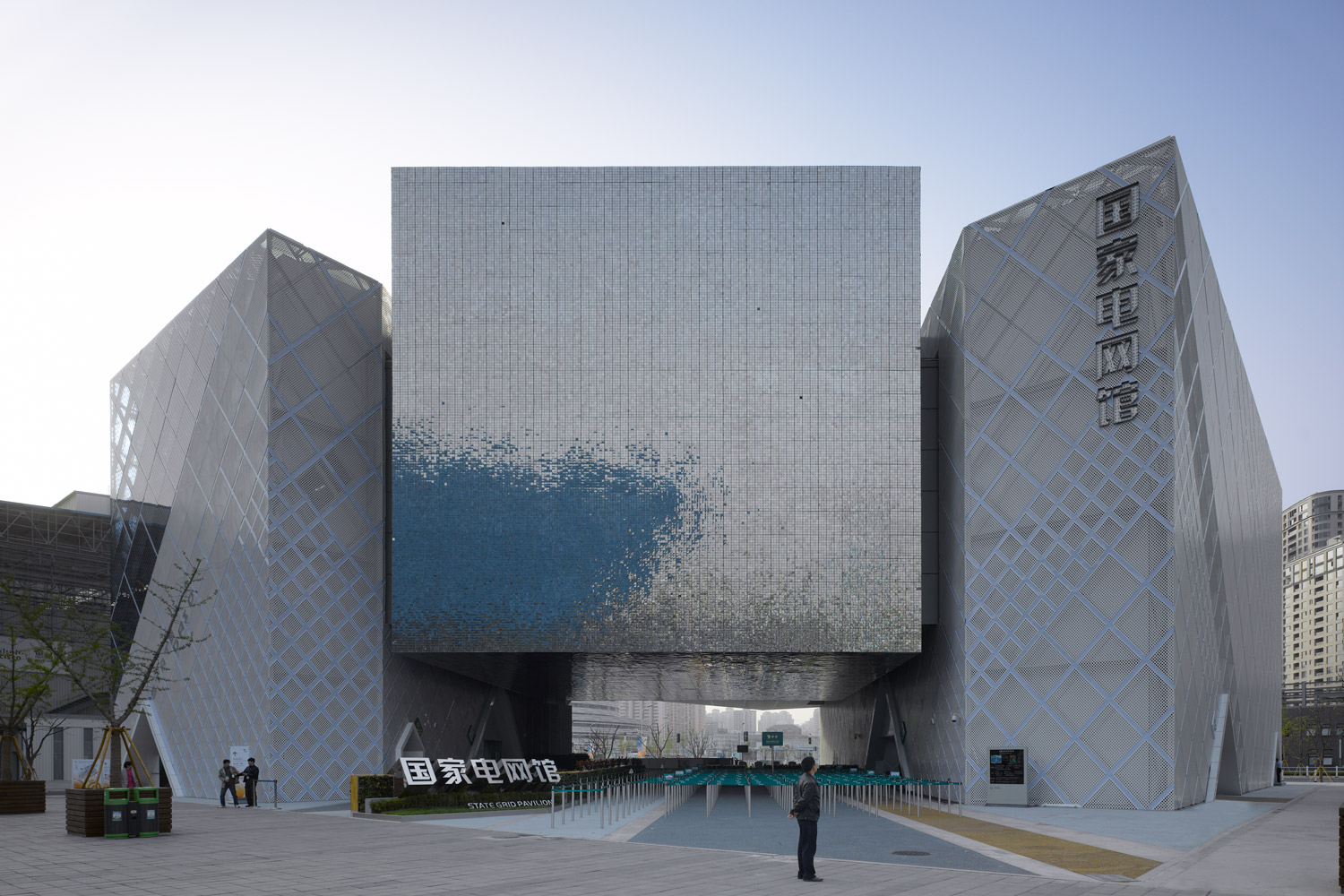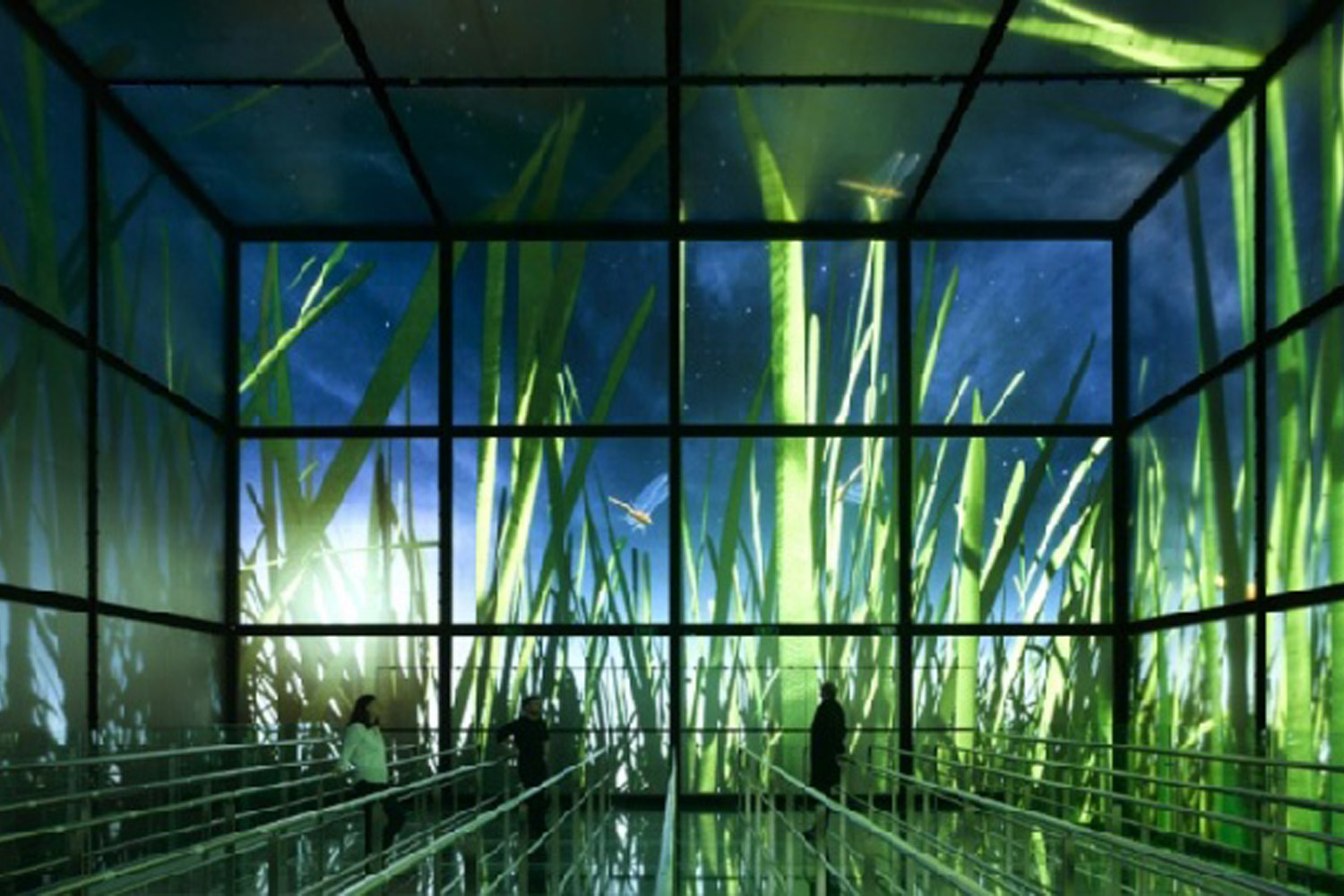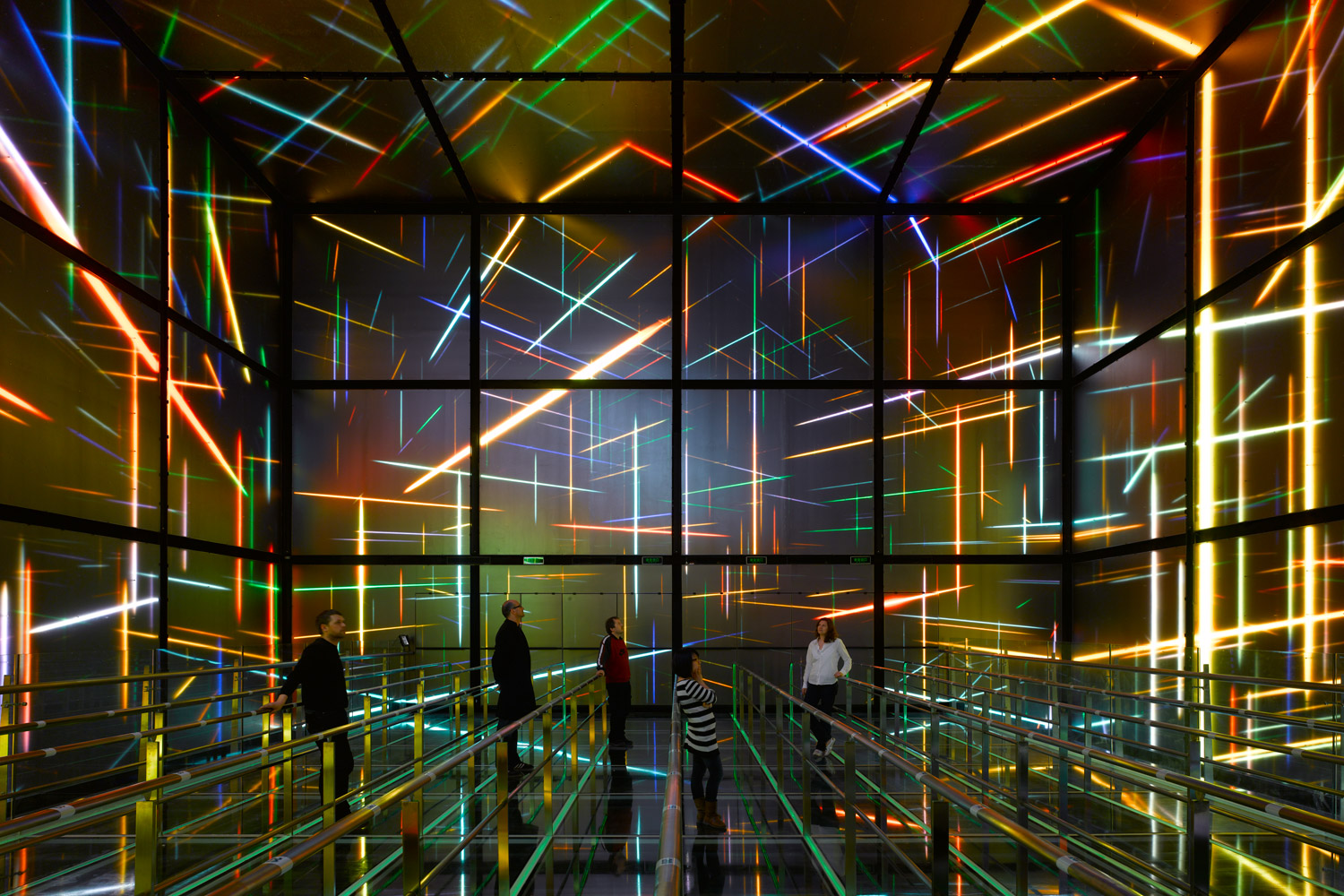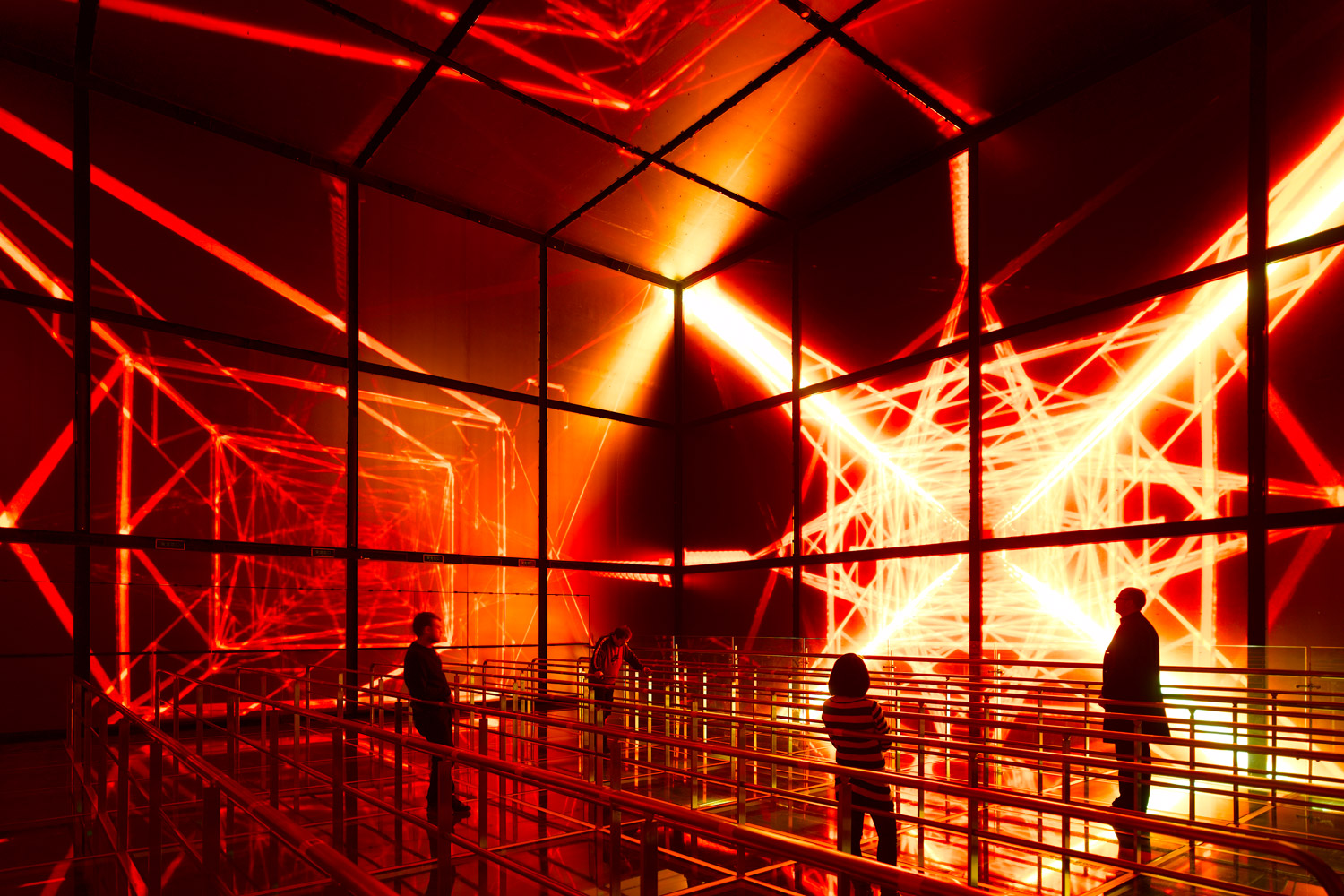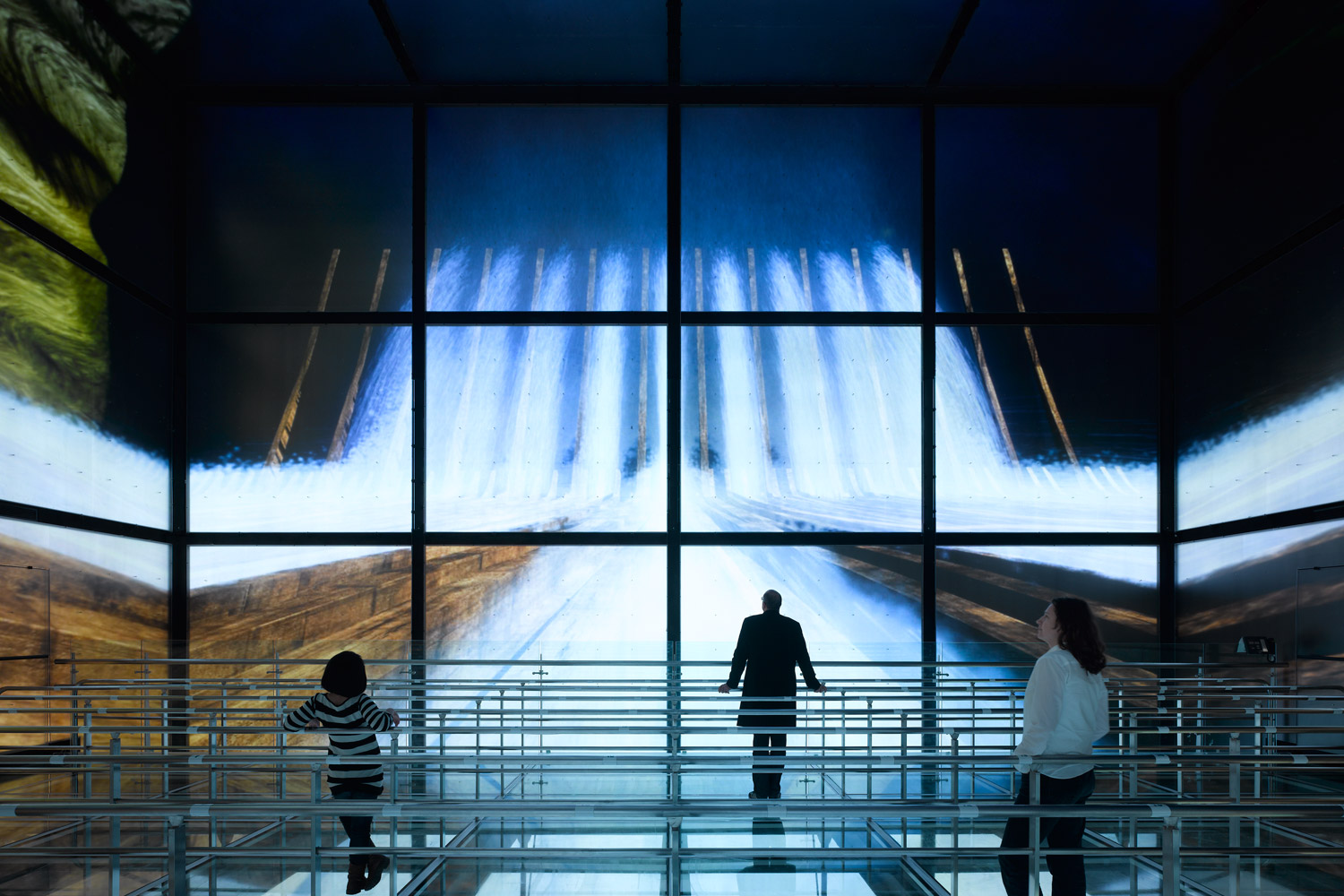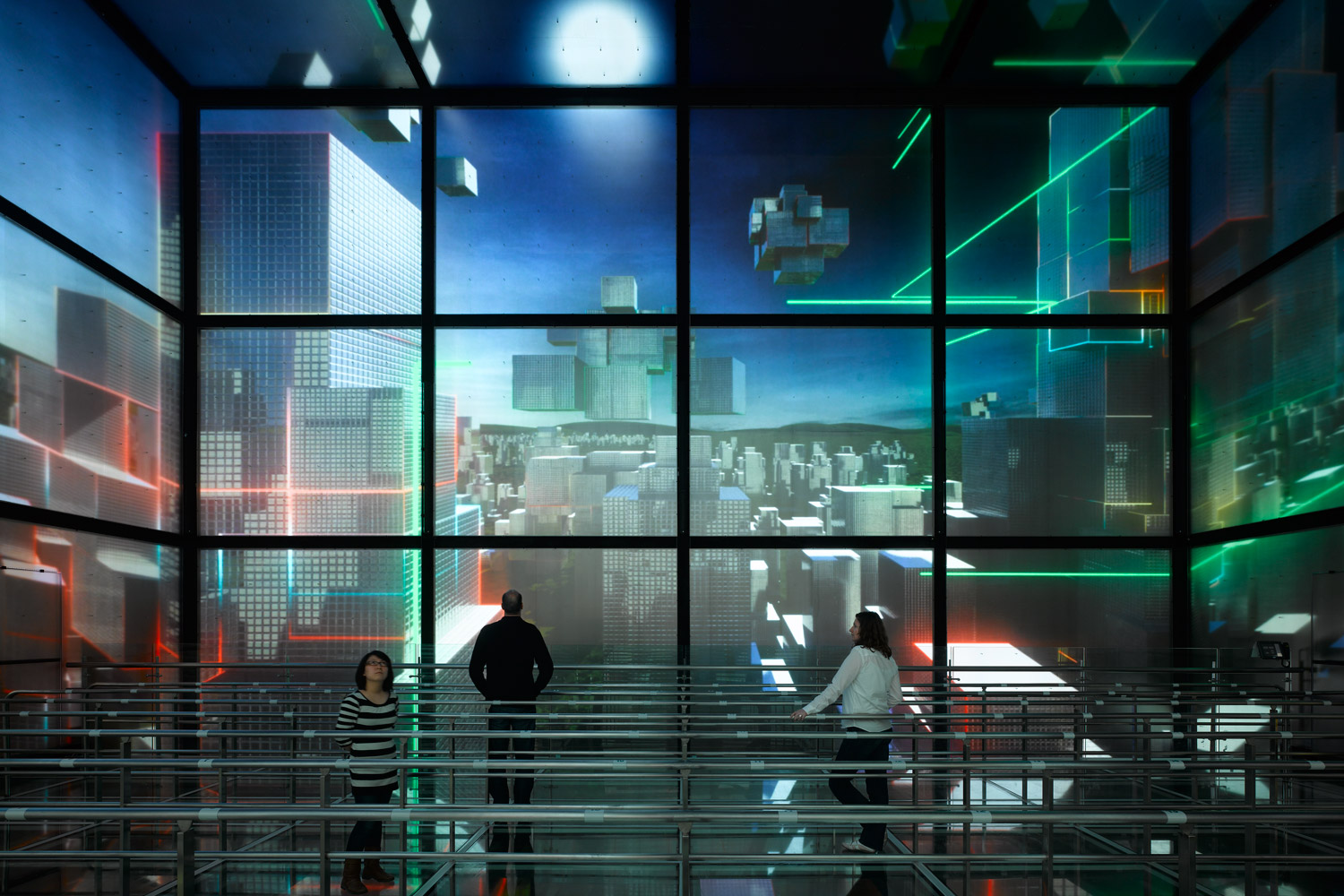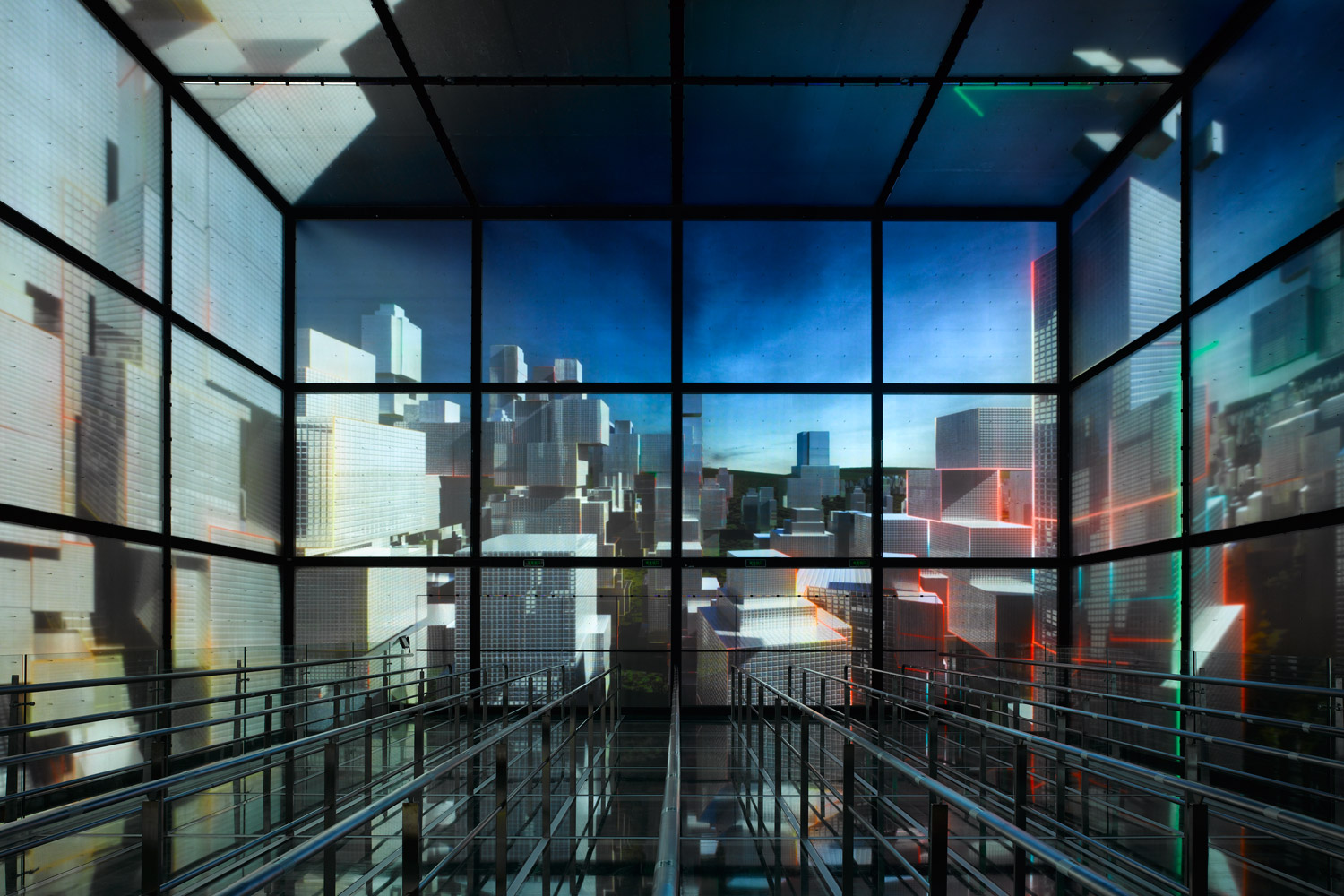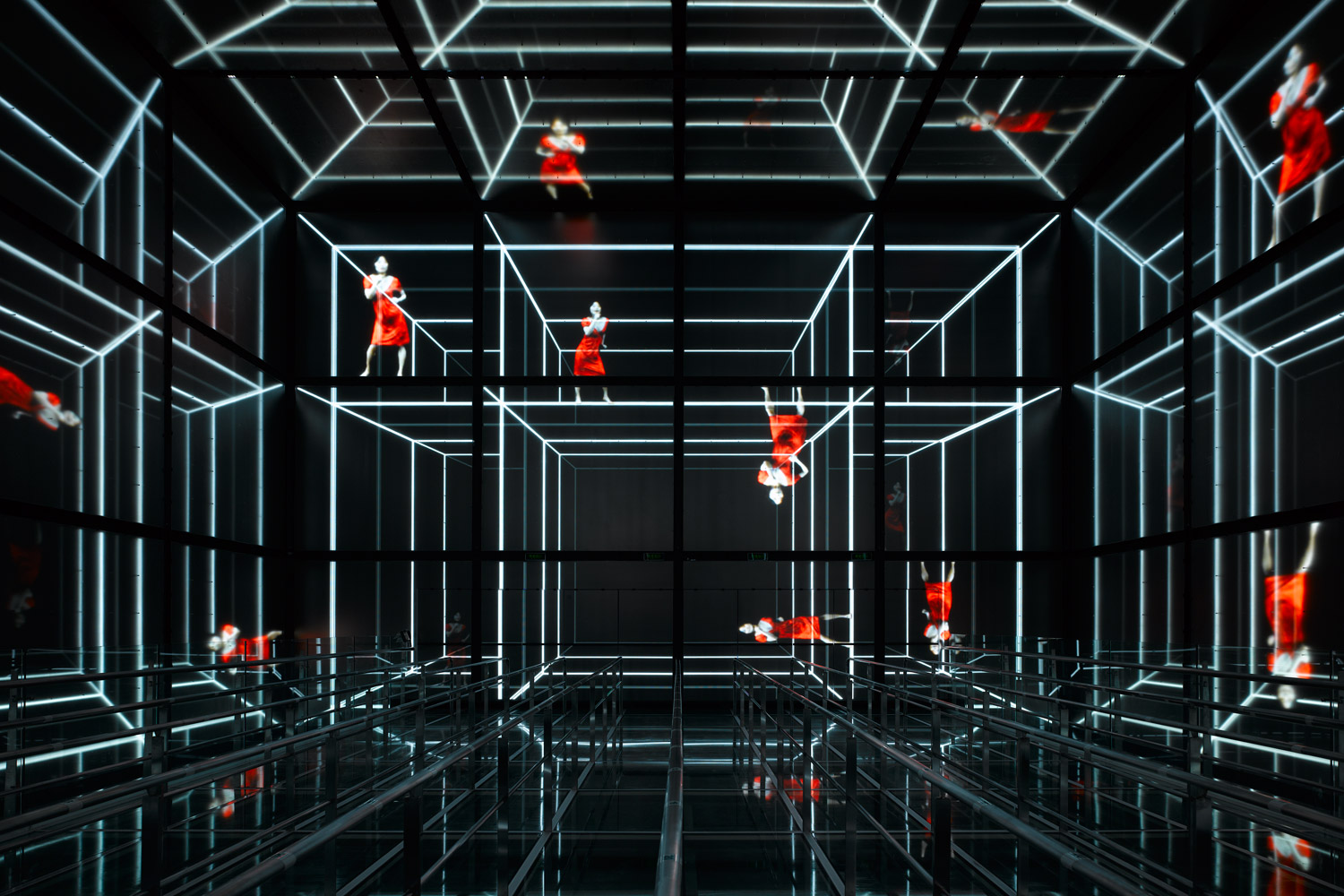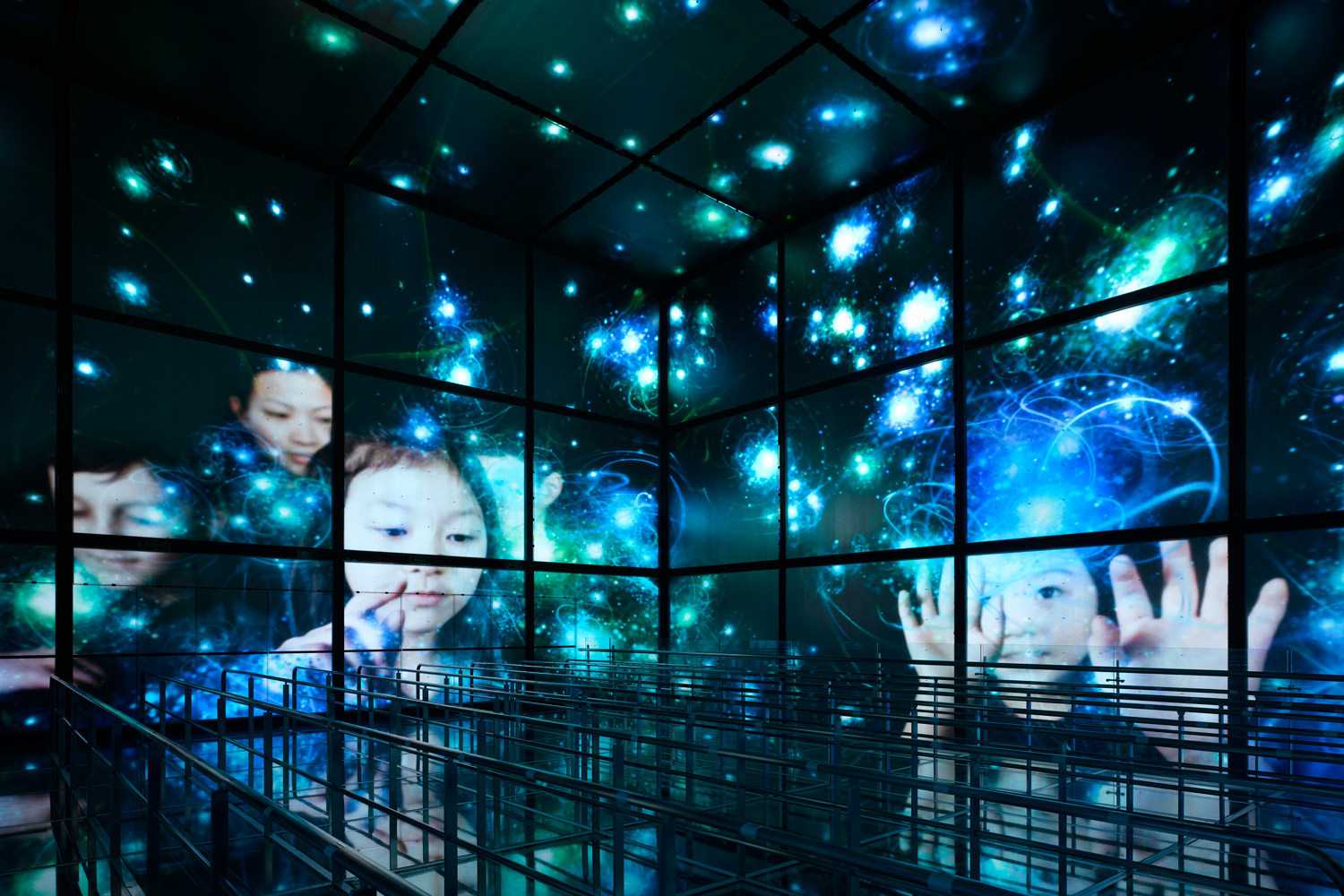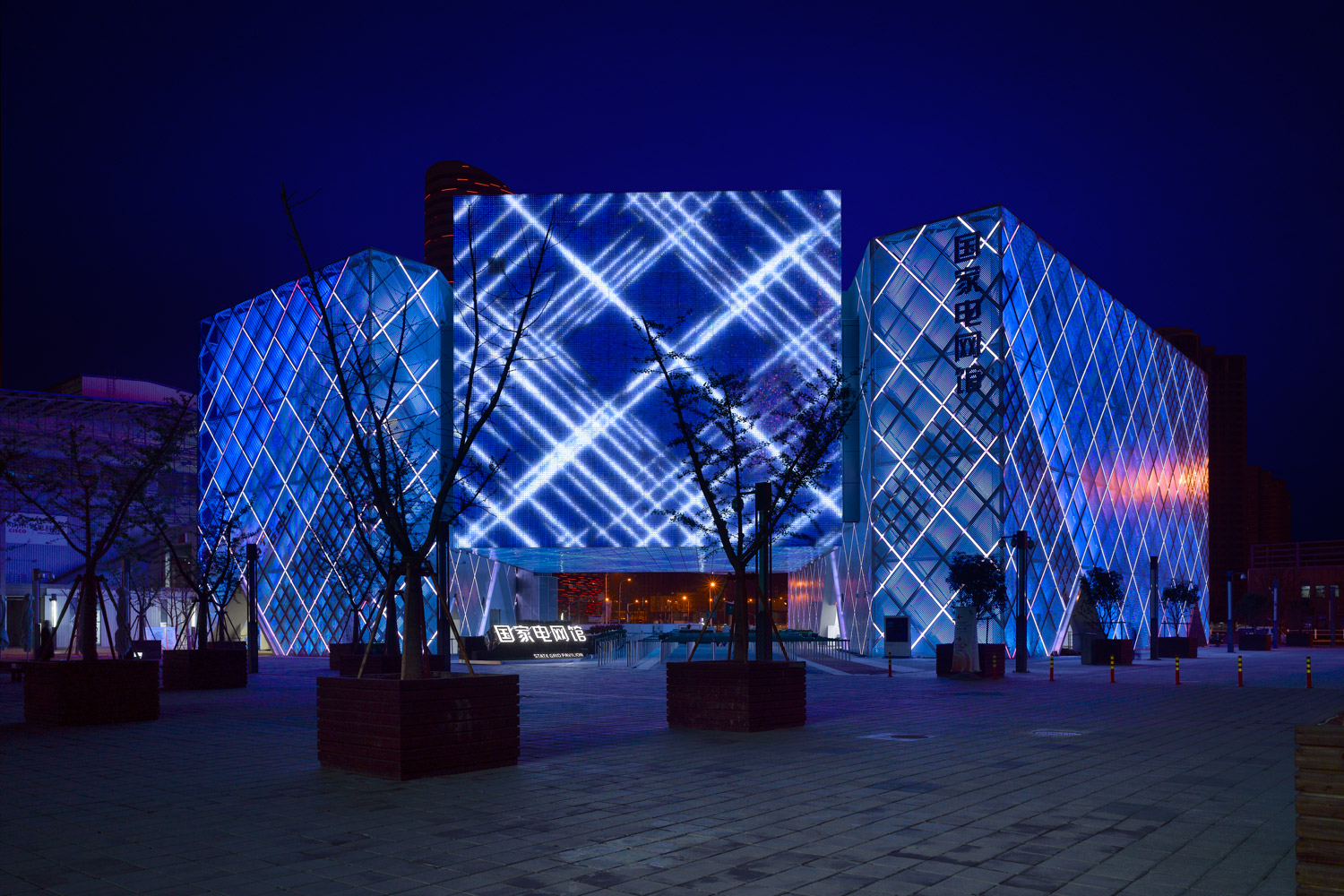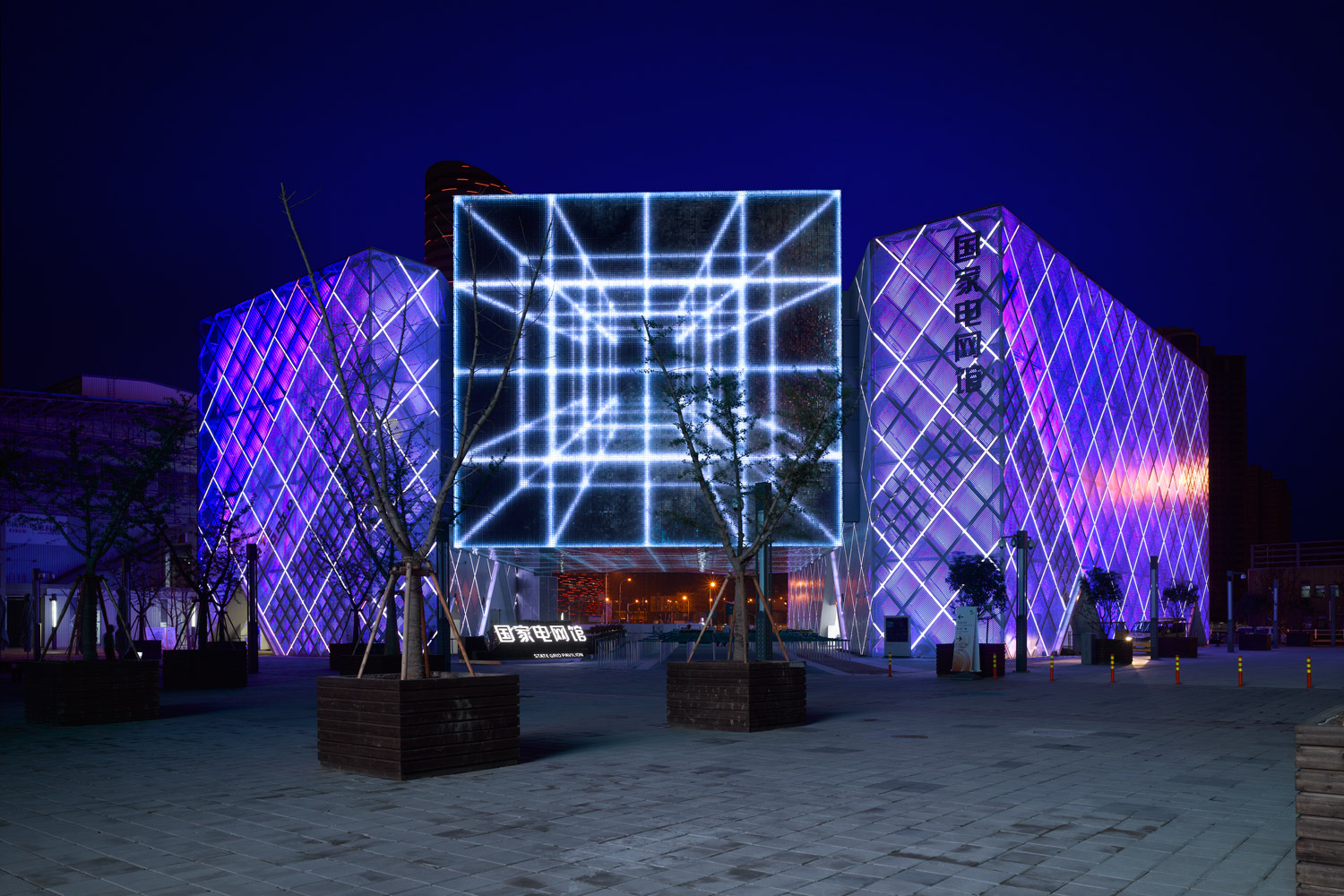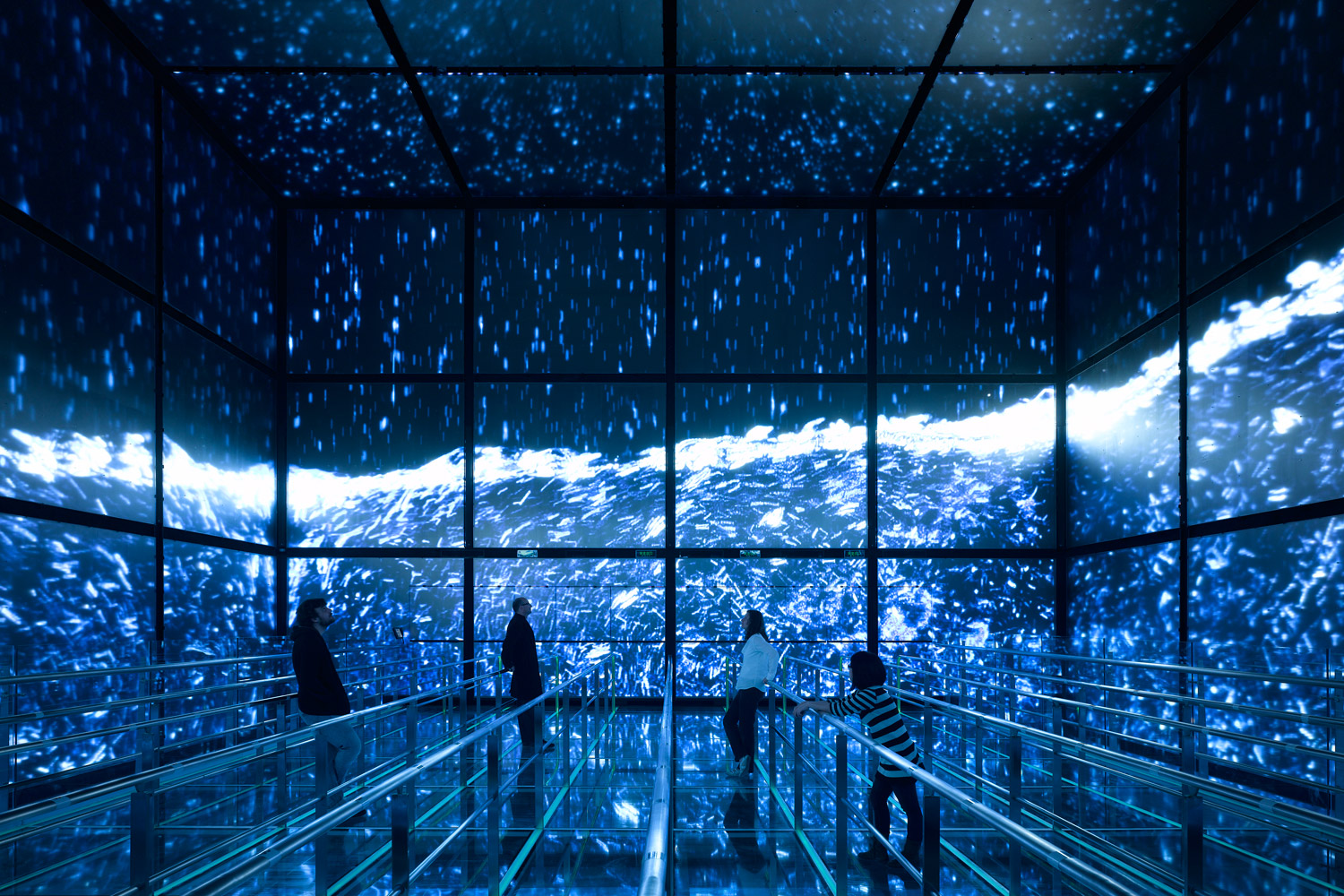Project Description
Overview
In an effort to create a totally unique Pavilion exhibition, the State Grid Corporation of China (SGCC) commissioned ATELIER BRUECKNER of Stuttgart, Germany to design the Magic Box, a distinctive cube which appears to float within the State Grid Pavilion complex. Rated number three in China’s top ten enterprises, and a global partner of EXPO 2010, SGCC is tasked with the country’s transmission and distribution of electricity.
The stunning Magic Box Pavilion consists of six giant LED walls – the six faces of the cube, each measuring approx. 15m x 15m (50 feet x 50 feet) – and features a glass bridge suspended three meters (10 feet) above the floor to facilitate downward viewing for 250 visitors to each presentation. Once inside visitors are rewarded with a unique, fully immersive, entirely computer-generated, three-dimensional surround audiovisual experience. Not surprisingly, the story focuses on energy: its origins, its transportation and how it is used to improve the quality of everyday life today and in the future.
Acoustical Challenges
Creating the fully immersive illusion is possible only with proper triggering of the visual and auditory senses. To establish this holistic listening experience a totally innovative environment was developed and implemented by Switzerland-based IDEE UND KLANG, a full service audio specialist, simultaneously charged with composing, creating, editing and mixing the original show soundtrack, an audio program designed for playback on a 21.2 channel Acousmatic Room Orchestration System (AROS).
In an effort to study a multitude of design versions and their impact on the acoustics of the space, the Walters-Storyk Design Group (WSDG) was brought on board. One major issue was the actual spacing of the LED panels – these needed to be as close to each other as possible to properly establish the fully immersive visual illusion. However, gaps were also required firstly to position the loudspeakers and secondly to obtain a sound path to the rear wall structure which was purposely designed to be highly absorptive. The electro acoustical design was driven by the goal of delivering the audio signal exclusively to the audience positions in order to reduce the potential for triggering the room’s excessive natural reverberation.
Solutions
Due to the parallel assembly of the LED panels, WSDG had to accept a certain amount of flutter echo, so increased attention was devoted to reverberation control. The decision regarding the exact spacing of the LED panels was driven by the predicted reverberation characteristics. Therefore, multiple configurations of LED panel sizes and spacing’s were modeled, simulated and auralized by means of specialized acoustical software. Additionally, WSDG was responsible for evaluating if and how the selected digitally controlled line array loudspeaker system could deliver the best performance considering the unfavorable room acoustical conditions, and to suggest treatment if needed. The superiority of the line array system in terms of directivity was established by simulating the direct sound pressure coverage of the entire room through additional acoustical simulations.
Ultimately, the complexity of the design program and the hyper-sophisticated playback system were resolved. “The opportunity to apply our expertise to a project of this magnitude was a significant challenge,” concludes WSDG Partner/GM for Europe, Dirk Noy. “We were confident that our collaboration with IDEE UND KLANG and ATELIER BRUECKNER would create an unforgettable viewing and listening experience for the Magic Box visitors. Our journey towards unlocking this visual and acoustic puzzle was as exciting and educational an adventure as the program it produced.”
Equipment Specifics
The LED screens are built from multicolor RGB LEDs and have a pixel pitch of 8mm. The dual HD video show is 100% computer generated. The audio replay equipment consists of an Insynergie 24 audio server player and a total of 21 Fohhn LF-220 digitally controlled line array loudspeakers and 2 subwoofer line arrays.


